David duChemin's Blog, page 26
May 22, 2014
For Jennifer, Whomever You Are.
Jennifer is a composite of all the students who’ve asked me to look at their work online and offer some advice. My advice has changed over the years.
Dear David,
I’m a second-year photography student. Would you look at my work and offer me any advice?
Dear Jennifer,
Thank you for the invitation to spend some time with your work. I know you meant for me to look at your work and give you advice based on that, but I only know how to struggle with the making of my own art, not yours. I could make suggestions about colour or composition but they’d only bring you closer to making your work look like mine, and no one needs that. Only you can discover what your art will look like. So here’s what I’ve got. It’s what I wish I’d heard sooner:
You’re young. I still think I am too, but it’s relative. You’re at the very beginning of this process and much as you think you are beginning to know who you are now, well, Life has a way of changing that person, and with it her art. You ain’t seen nothing yet.
So since you’re at the beginning, spend more time working on the artist than the art. Be patient with her. Allow her to express her wants and desires and chase hard after them. They’re likely to change along the way. Chase them wherever they lead. Learn to listen to, and trust, that voice.
Take risks. Take more risks.
Be heartbreakingly vulnerable with the world and your art.
Don’t take yourself too seriously.
Be curious.
Call bullshit on safety and face your fears daily. Don’t be afraid of the unknown. Discovery only happens in the unknown.
Do your work. Always do your work. Even when it’s shit. Keep doing it. Because making lots of bad art is the only way to get to a place where you’ll one day make great art. Failure is a much more faithful teacher than immediate success (which usually isn’t what it seems).
Look at, and study, the work of the masters. Form strong opinions about that work, and be willing to change them.
Look at the world with all your senses; seeing is about perception and that’s a whole-being kind of thing. Experience life, don’t just shoot it. You can’t photograph well what you haven’t experienced.
Colour outside the lines and ignore the so-called rules. Look for principles instead; they last longer and serve us better.
Lastly, through all that, learn your craft, and be so good at it that no one can ignore you. But never confuse craft for art. One is a means, the other an end.
Your work is beautiful. It’s a great start. But right now, the harder, more interesting task ahead of you, is to tend the garden from which the better fruit will one day come: you. Obsess about the work, we all do, but remember that in 5 years you’ll look back and see this work – as it is for all of us – as only a starting point. Don’t get too hung up on it. Your best work will always be ahead of you. It’s true now, and it’ll be true in 25 years. We never “arrive.” There is only the winding, beautiful journey as we chase our changing vision and the muse that’s always a few steps ahead, just disappearing around unexpected corners.
May 18, 2014
New eBook: Nightscape
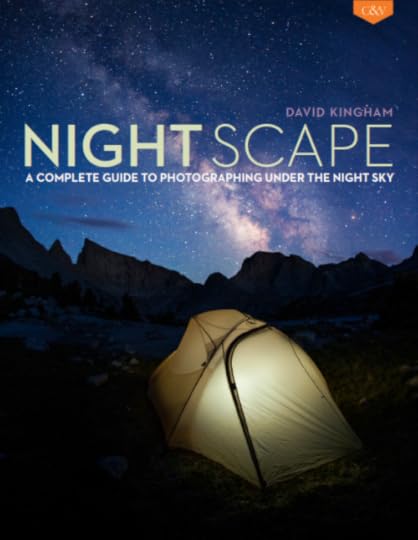

David Kingham and I met in person for the first time recently, but even before we met I had the strong feeling he was my kind of guy. He lives nomadically in his truck with his dog, sleeping in hotels only when he’s running one of his popular night photography workshops. He’s definitely my kind of photographer – thoughtful and with a keen desire to spend time in wild places, his strong sense of craft is balanced by his desire for beauty. So when we first had the opportunity to work with David and publish his book Nightscape, A Complete Guide to Photographing Under the Night Sky, we jumped at it. And what a book it’s become. One of the best looking books we’ve created, full of content that’s not only useful but really interesting, Nightscape will teach you something you don’t know, I guarantee it. Anyone who wants to photograph outdoors once the sun goes down will get a wealth of knowledge out of this book, even if you don’t take it as far as David does. My own after-twilight photography will change for the better because of what I learned reading this book as we made it, never mind how inspired I am by the photographs.
This is a large book. It’s 120 pages, packed with great photographs, excellent education from someone who really knows his stuff, and tons of resources, too. On top of that, David’s allowing us to include 22 of his Lightroom presets, which compliments the book well because there’s a really solid section on post-production that goes way past the basics and into stuff I didn’t even know was possible.
If you’ve ever wanted to photograph the night sky, or landscapes in which the night sky features, you need to read Nightscape. It’s that good. And like everything we do at Craft & Vision, it’s a really great value, priced at just $12 so we can get it into as many hands as possible. And if you buy it during the first week, before May 27 you can get it for 20% off, just $9.60. No discount codes, just add it to your cart and checkout.
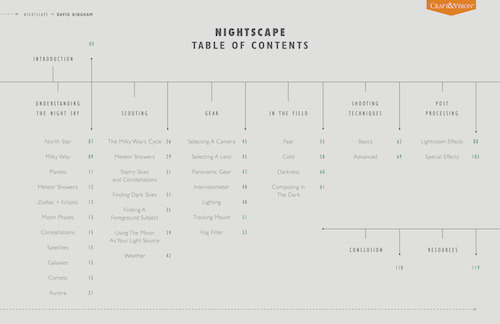
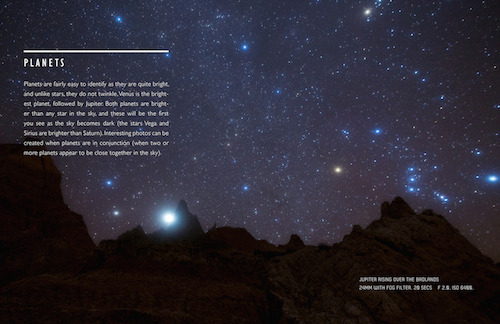
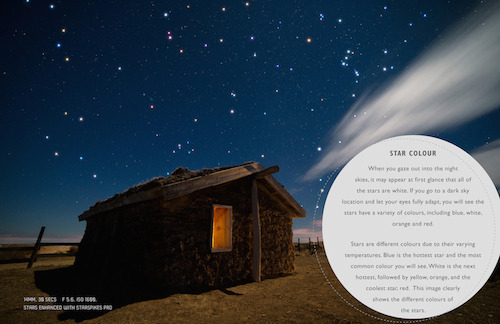
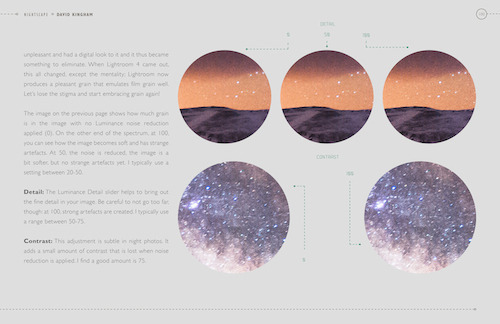
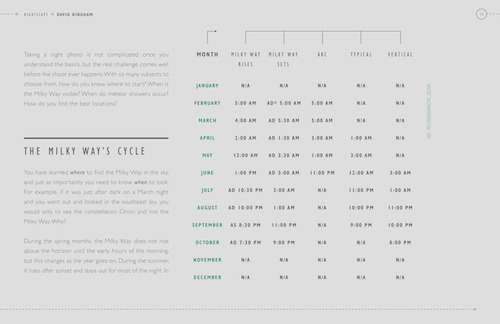
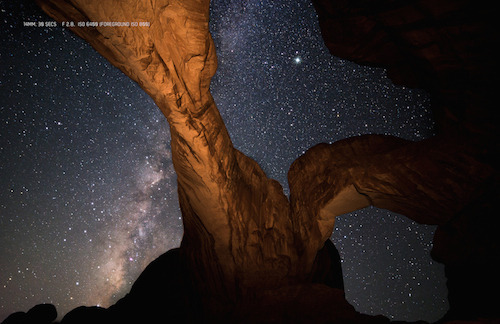
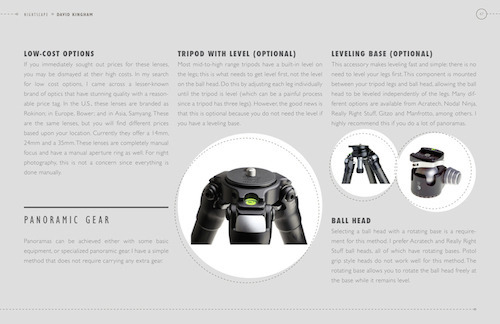
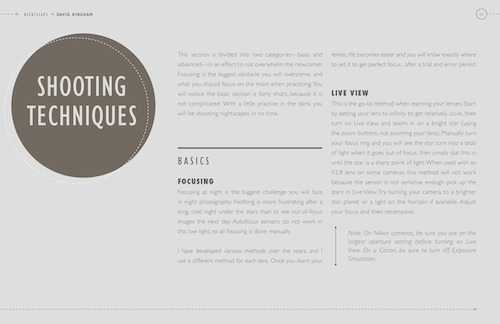
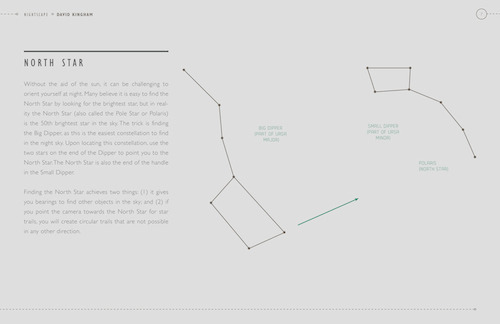
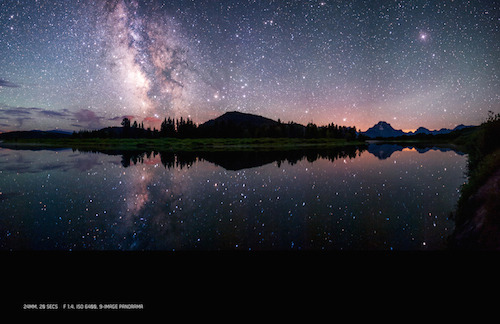
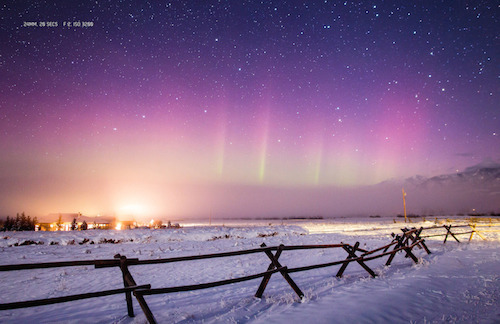
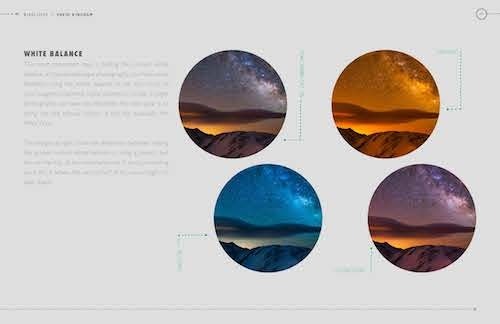
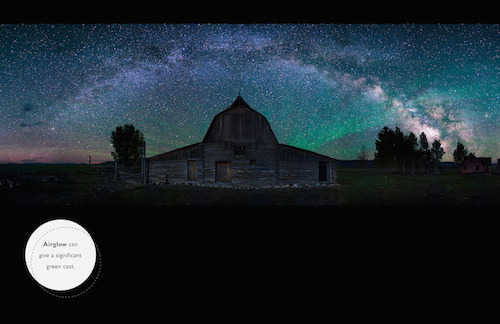
May 15, 2014
Study the Masters: Arnold Newman
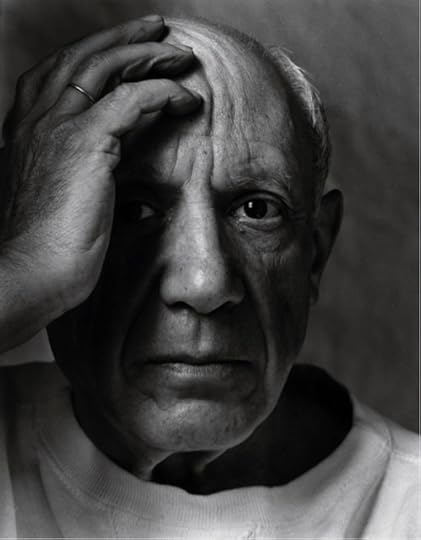
Last week I introduced you to Yousuf Karsh. American-born Arnold Newman (1918-2006) was his contemporary and the studying the two together is an interesting study in voice. Both photographed largely in black and white, both photographed celebrities, artists, and luminaries of their generation, and both used simple composition. To my eye, Newman is more graphic, though he leans no less on the importance of moment and emotion. He also feels a little more casual and, without taking anything away from Karsh, feels a little more accessible. His portraits of Picasso, above, and of Stravinsky, below, are among my favourites.
“We do not take pictures with our cameras, but with our hearts and minds,” ~ Arnold Newman
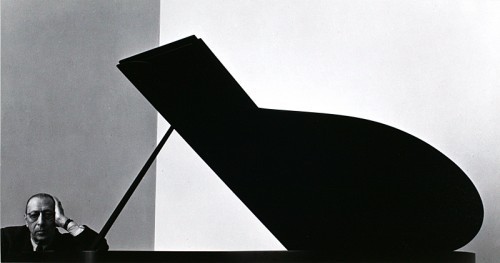
There’s a great article over on My Modern Met about Newman, here, and it’s a good introduction to his work.
If you’re looking to get a book, there are two I recommend. The first is One Mind’s Eye (Amazon link) and the second is Masterclass: Arnold Newman, by William A. Ewing. (Amazon link)
May 13, 2014
Within The Frame Giveway: Signed Print Folio

As part of Within The Frame month, which we’re celebrating over here in wild style (My book, Within The Frame, came out 5 years ago. There has been wine, and there’s a good chance there will be again,) I wanted to do a couple giveaways. In part I’m hoping to bring new interest to a book I still believe is important and needs to be read (even though I wrote it), and I’m hoping a few new readers will look it up for the first time, but mostly I want to say thank you. So while I’m also giving away a beautiful leather-bound edition of Within The Frame, of which only two exist, I also wanted to give away some of my work. 2 chances to win.
At the end of May we’ll draw one name from the comments on this post. The person that belongs to that name will get a folio of 8×10′s – a collection of ten of my favourite images from Within The Frame, printed and signed by me. All you have to do is leave a comment. Something as simple as “Yes, please,” or “Count me in!” will suffice. If you’re feeling like increasing the karmic odds, you could also leave a review on Amazon for Within The Frame, or tell your friends to read it, but I’ll leave that up to you.
For making this book the unexpected thing it has become, I’m grateful. Thank you.
Comments are open. Who wants this folio of signed prints?
May 10, 2014
Study the Masters: Yousuf Karsh
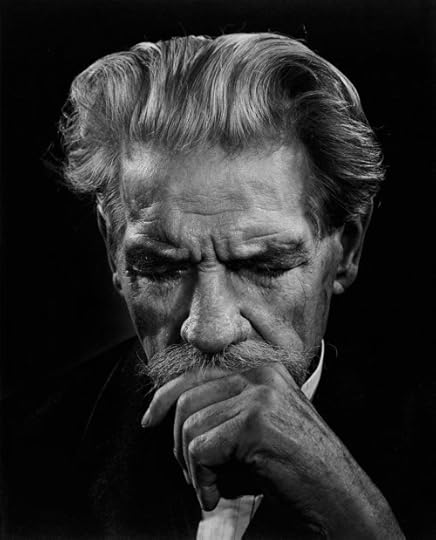
Yousuf Karsh was one of my earliest influences. His portraits, much of his work in black and white, were simple, elegant, and deeply human. An Armenian-Canadian, Karsh was born in Turkey in 1908, worked most of his life in Ottawa, and died in 2002, leaving behind a lifetime of beautiful portraits of the leaders of his generation. I think what draws me, still, to Karsh’s work, is the lack of pretense or cleverness; I never get the feeling he’s saying “look at me,” I never get distracted by his craft, and I think that’s one of the marks of a true master.
You can find more of Karsh’s work through the official website here, but I think there’s no substitute for seeing it in print. When I was in rehab a couple of years ago in Ottawa, and learning to walk again, Karsh’s prints loomed large in the hallways. I’d walk past Churchill often, glowering down at me, daring me to complain or give up. His portrait of Schweitzer, above, still moves me, after 25 years of looking at it.
You can get your hands on books of Karsh’s work on Amazon. I recommend Karsh: A Sixty Year Retrospective, Karsh Portraits, and Karsh: Beyond the Camera, is great if you want to read the stories behind his work.
I call this feature Study the Masters because I think really studying – not merely looking at – the works of great photographers, is one of the best ways to learn this craft. Sure, look at the images. But really read them. Interact. Ask questions – why did the photographer choose this particular moment or gesture? What can I learn from the light? How does each image make you feel? What does his body of work say to you? You won’t like it all, but you can learn from it all.
A thanks, too, to reader Bryan Nelson for the reminder that your local library might have many of these books. You don’t have to buy every one of these books (though you wouldn’t know that to see the growing stacks here in my loft.)
May 8, 2014
Making Within The Frame
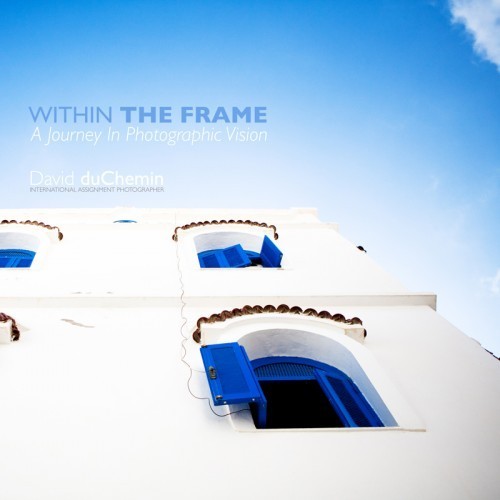
The original cover concept I sent the publisher. I’m glad they over-ruled me.
Six years ago, I got a phone call from a publisher asking me to write a book. The original author had bailed due to health issues, and they wanted to know if I was interested. I wasn’t, but it got my foot in the door and I pitched them a book about travel photography that, to my great relief now, they had absolutely no interest in. My publishing career was off to a flying start! It was that failure and the knowledge deep down that no one really needed yet another generic travel photography book that made me sit down and really think about it: what would I write if I could do it my way?
When I came up for air I had an idea for the book that, with some strong editorial guidance, became Within The Frame, published 5 years ago this month and now available in over a dozen languages around the world. In hindsight it feels almost as if the book has always existed for me, but at the time it was a bunch of “what ifs” about a book that had yet to be written, by a photographer few people knew about.
It started with insulting Scott Kelby. Actually, that’s not true. It started with a comment on my blog that was made in fun about Scott Kelby’s trademark humour and to which Scott replied (to my shock) with that same humour and grace. I apologized if it had come off the wrong way, Scott said it had not, and that he liked my work. There were a few notes back and forth, and for a young guy (me) with so much respect for such a talented teacher (Scott), I had a few stars in my eyes. I’m writing that for two reasons – the first because I want to give credit where it’s due and without Scott Kelby this book never would have come to life the way it did, and the second so you understand that it wasn’t easy for me. I took a risk reaching out to someone who, to my mind, had no good reason to even take my call. But he did. And when I asked if I could fly to Tampa to take him to lunch, he not only said yes, he paid for lunch.
So now I had a lunch date with one of the best-selling photography authors on the planet. And I had an idea for a book that I wanted to pitch. But first I had to get there. Tampa is a long way away and when I went to book the flight, it was much more than I bargained for. A friend, to whom I am still indebted, said she’d like to pay for the ticket, and I will be paying that one forward, with gratitude, for the rest of my life. She sent me enough to cover a car rental and hotel too, none of which I could afford. And weeks later I was sitting nervously in front of Scott, telling him about my idea, and asking him if he’d introduce me to his editor. Scott laughed, and said he’d do one better, and he picked up his phone and made a phone call, on the spot, and told his editor to give me a chance. I got the chance, and I ran my little heart out with that chance, but none of the chances that come our way do so out of context.
5 years later I’ve done 5 books with my editor, Ted Waitt, a man that’s also become a good friend and a great collaborator. He walked me through refining that first proposal, and eventually through writing the book. I recall having a few too many drinks the day he sent my contract. Then I bought a round the world ticket that would take me to Cuba, Egypt, Nepal, Thailand, and Vietnam, before back to San Francisco and Vancouver with my friend, the Legendary H, who watched my back the whole time and helped me flee a fogged-in Sapa in Northern Vietnam, when my very large Cuban cigar turned on me, made me sick for days, the onset of which sickness was the cause of an unexpected re-decoration of the stairwell leading to the bar’s washroom, at which I arrived too slowly. Hotel California was playing as we fled into the night, knowing we could never, ever, return. My God, it was a fantastic trip.
And after sitting in a coffee shop for a couple months, with no idea, really, how to write a book, the book was done. I never imagined it would become what it has in my life. I had no expectations, really. I just wanted the book to matter, to add my voice to the voices out there already, in hopes it would change something, for someone. I don’t think I had any sense that the person the most changed would be me.
Still haven’t read Within The Frame? Keep reading, Peachpit’s giving us a fantastic deal.

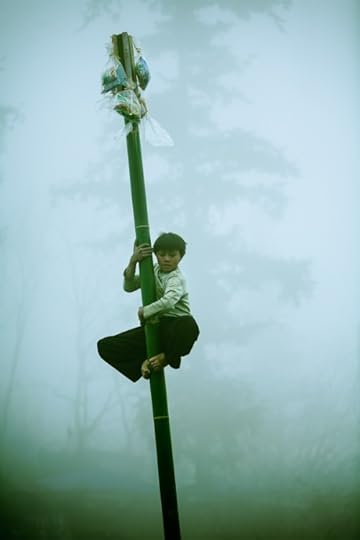



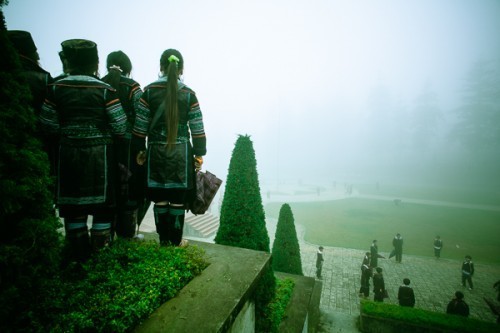
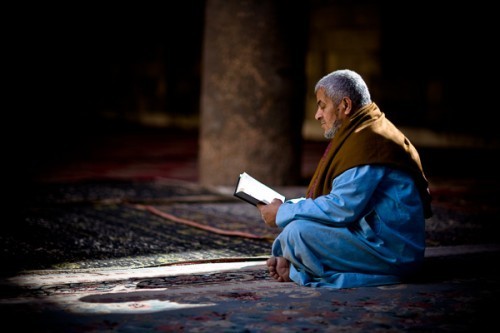
You can pick up a copy of Within The Frame at Peachpit.com and to help us celebrate, Peachpit’s giving us a killer deal – use the coupon code DUCHEMIN and you’ll get 40% off – which means you can get the paperback for $21.59, the eBook version for $17.27, or a bundle with both the paperback and the ebook for only $29.15. That’s a deal so good I might just buy a few!
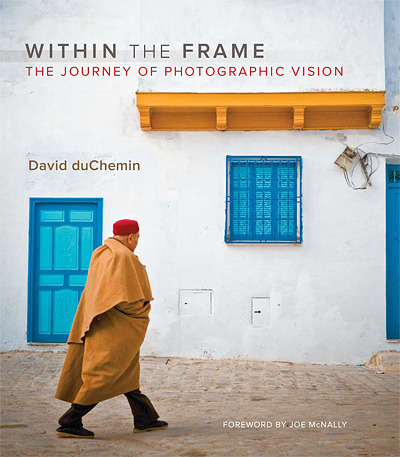 Within The Frame, The Journey of Photographic Vision, available on Amazon.com here, was published 5 years ago this month. Thanks to everyone who was a part of this amazing journey, most of all to those who’ve read it, left reviews, taken me for coffee, or sent fan mail of some kind. My life is richer because of you, and I’m deeply grateful.
Within The Frame, The Journey of Photographic Vision, available on Amazon.com here, was published 5 years ago this month. Thanks to everyone who was a part of this amazing journey, most of all to those who’ve read it, left reviews, taken me for coffee, or sent fan mail of some kind. My life is richer because of you, and I’m deeply grateful.
May 6, 2014
Within The Frame Giveaway: Deluxe Edition
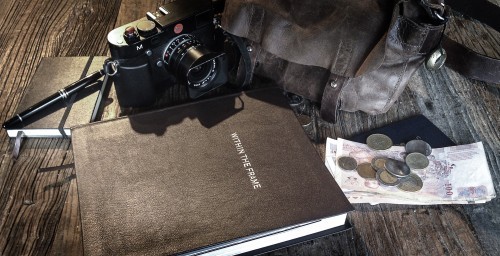
Last month I walked into a bindery with two copies of Within The Frame (which is 5 years old this month!) and asked them to make a very special edition of this book. I just picked them up and they’re gorgeous! Custom bound in rich brown goat leather, with black end papers, and silver embossing, there’s not another one like these two books. I’m keeping one for myself, and the other I will sign and give away.
Never in a million years would I have imagined Within The Frame would be so successful; my only real goal for it was that it be important to the readers that found it. They say you should write the book that you yourself want or need, so that’s what I did with Within The Frame. That people already consider it a classic, and send me photographs of their dog-earred copies all over the world, tells me I did that. I couldn’t be more grateful. So I’m hoping this one will replace a copy that’s bedraggled and well-loved and will give you years more pleasure.
At the end of this month I’ll draw a name from the comments below and this very special edition, and send it out, with my thanks. And you could be the one getting it.
All you have to do is leave a comment with your favourite quote from the book, or tell me what this book has meant to you. And then on May 30, I’ll draw a name and email one lucky winner for a shipping address.
If you’ve read Within The Frame I’d love to hear from you. I can’t wait to see who gets this ridiculously nice edition. Thanks to everyone that read it, left an Amazon review (you can still do that!), or told their friends they needed to read it (you can still do that too!). I’m so grateful; thank you! What a great 5 years it’s been – thanks for making it so special.
 You can pick up a copy of Within The Frame at Peachpit.com and to help us celebrate, Peachpit’s giving us a killer deal – use the coupon code DUCHEMIN and you’ll get 40% off – which means you can get the paperback for $21.59, the eBook version for $17.27, or a bundle with both the paperback and the ebook for only $29.15. That’s a deal so good I might just buy a few!
You can pick up a copy of Within The Frame at Peachpit.com and to help us celebrate, Peachpit’s giving us a killer deal – use the coupon code DUCHEMIN and you’ll get 40% off – which means you can get the paperback for $21.59, the eBook version for $17.27, or a bundle with both the paperback and the ebook for only $29.15. That’s a deal so good I might just buy a few!
May 4, 2014
PHOTOGRAPH, Issue 7
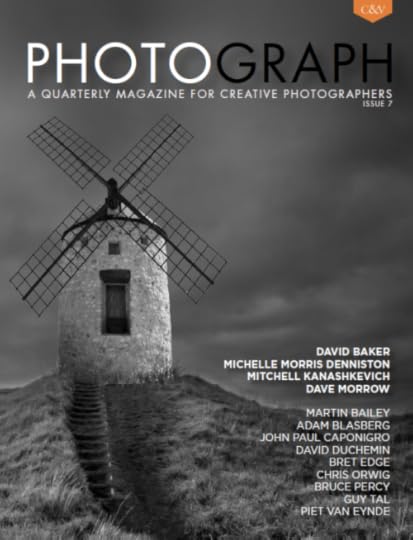
 Issue 7 of PHOTOGRAPH, the Craft & Vision digital magazine for creative photographers is now out, and it’s stunning! I know, I’m easily excited but the team has done a really beautiful job.
Issue 7 of PHOTOGRAPH, the Craft & Vision digital magazine for creative photographers is now out, and it’s stunning! I know, I’m easily excited but the team has done a really beautiful job.
Portfolios from David Baker (you have to see his Sea Fever work, it’s gorgeous!) Michelle Morris Denniston (she’s on the cover) Mitchell Kanashkevich (stunning work from Vanuatu) and Dave Morrow (beautiful nightscapes). The Featured Article is from Bret Edge, and the usual columnists are here, including Bruce Percy’s Natural Light column and John Paul Caponigro’s Creative Composition, but we’re also thrilled to welcome Guy Tal on board as well. Guy is one of my favourite writers about photography and having him work with us is very exciting and makes an already excellent magazine even better.
PHOTOGRAPH is 175 spreads. It’s really, really large. And it’s beautiful. And apart from a heartfelt thanks to Gura Gear, who sponsored this issue, it’s completely ad free.
NO DISCOUNT CODE REQUIRED
PHOTOGRAPH Issue 7 is CAD $8.00 but purchase before May 11 at 11:59 PM (PST) and you’ll save 20% – you will pay just $6.40 We’ve put this issue on sale and therefore no discount code is required.
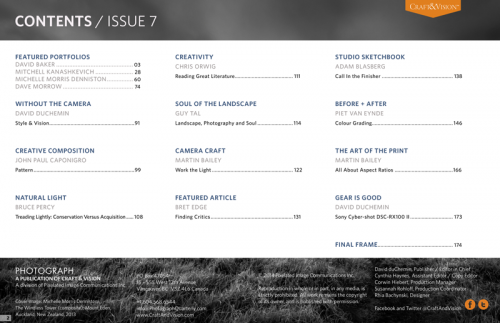
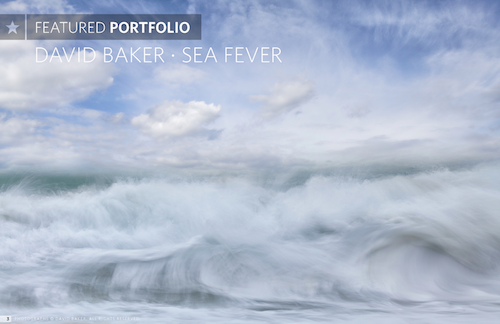
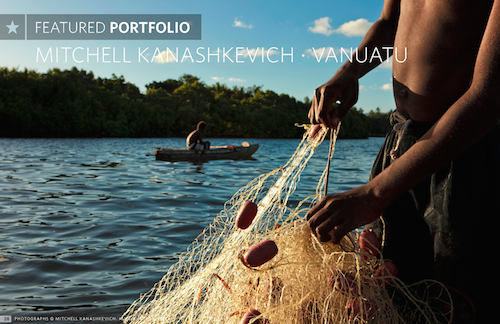
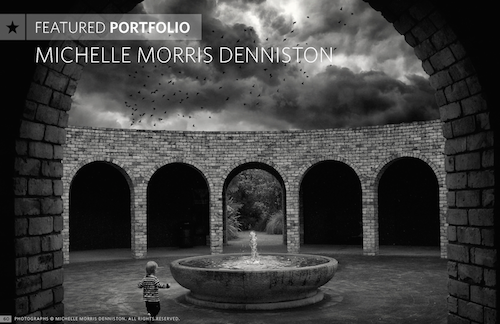
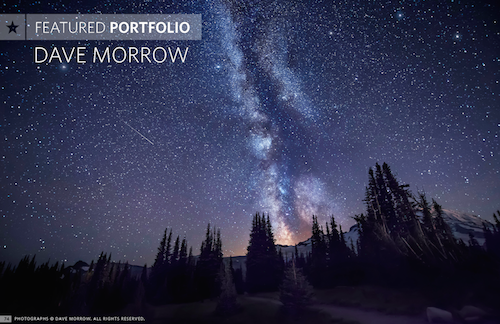
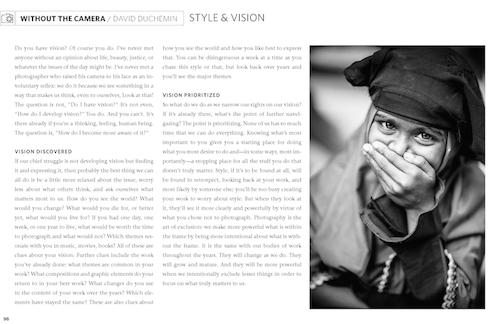
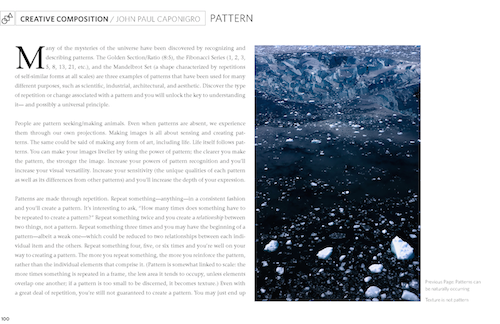
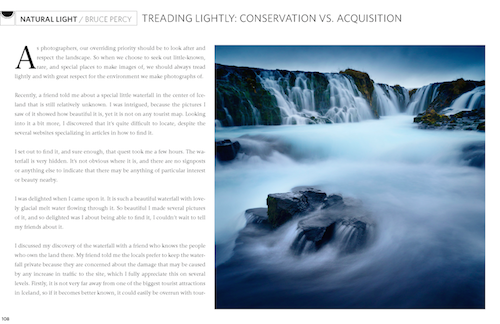
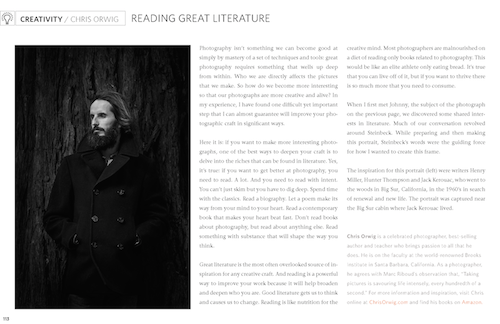
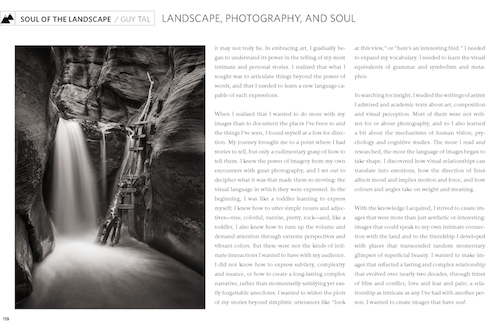
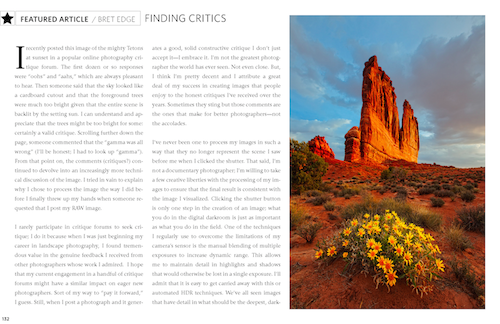
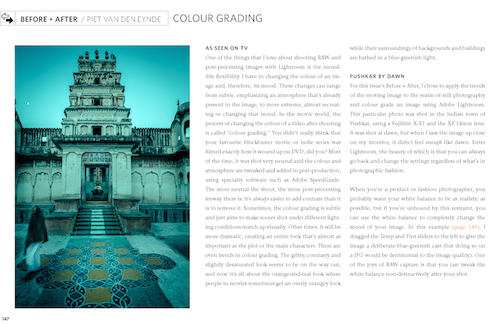
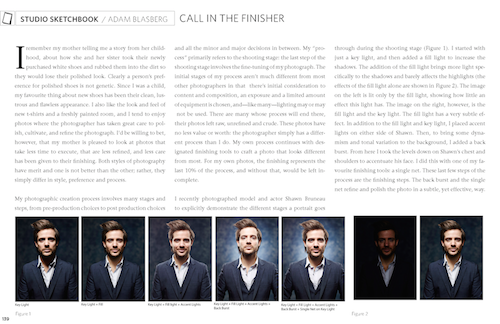
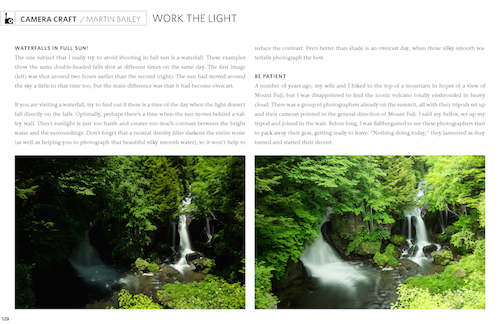
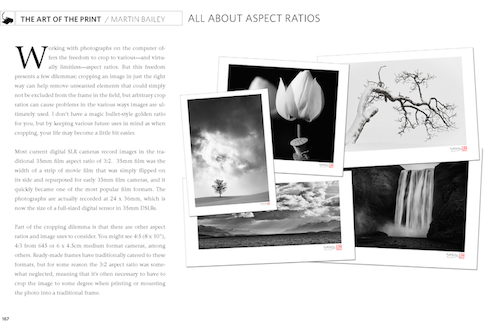
May 1, 2014
Within The Frame: 5 Years

Never underestimate the power of one decision, one conversation, one risk taken, to completely change the course of your life.
5 years ago this month Within The Frame, my first book, rolled off the presses and into the hands of what would be way more people than I ever imagined. In that time Within The Frame’s been translated into over a dozen languages, including Farsi, Arabic, Korean, Swedish, and Polish among them, and sold all over the world. One of the proudest moments of my life was reading the foreword that Joe NcNally so beautifully wrote, and the moment my mother read the dedication and burst into tears remains one of my favourites. This book literally changed my life, so this month I’m taking 5 Thursdays to celebrate, and with it, to extend my thanks to everyone that’s bought a copy, sent me the fan mail that still makes my head spin and my heart swell, or left a review that in turn has encouraged others to read it. Thank you!
This week I wanted to post an excerpt from the book. Next week I’m hoping I can unveil the first of the giveaways we’re doing this month.
IT’S ABOUT VISION
Vision is the beginning and end of photography. It’s the thing that moves you to pick up the camera, and it determines what you look at and what you see when you do. It determines how you shoot and why. Without vision, the photographer perishes.
Vision is everything, and the photographic journey is about discovering your vision, allowing it to evolve, change, and find expression through your camera and the print. It is not something you find and come to terms with once and for all; it is something that changes and grows with you. The things that impassion you, that anger you, that stir you—they are part of your unique vision. It is about what you—unique among billions—find beautiful, ugly, right, wrong, or harmonious in this world. And as you experience life, your vision changes. The stories you want to tell, the things that resonate with you—they change and so does your vision. Finding and expressing your vision is a journey, not a destination.
You can spend a lifetime chasing your vision, learning not only to see with more clarity, but to express that vision in stronger and stronger ways. It’s important to remember this because it fights against the discouragement that all artists inevitably face. The feeling that we’re seeing nothing new, have nothing to say, or have created our last good photograph. When that happens it’s helpful to remember that the journey isn’t over yet. As long as we’re alive and interacting with life, the world, and the people around us, we’ll have something to say. And as we learn and practice our craft, we’ll have stronger ways—better ways, even—of expressing it.
Vision can be elusive. We may not always have an immediate conscious reaction to the world around us, may not understand our feelings about the story in front of us. In these times, it is often the case that the camera becomes more than a means to record our vision; it becomes a means to help clarify it. The act of looking through the frame, of excluding other angles and elements, of bringing chaos into order, can bring our vision to the surface. This ability to help us see means, in some way, that the camera is a partner with us in the process, and it is what separates photographers from painters. We have a symbiotic relationship—not with the camera technology but with the frame, which, for all the technological changes photography has been through, remains the constant.
Our vision often grows to match our skill. As we gain new tools and skills with which to better express our vision—in deeper and more complete ways—so our vision is given the room to grow deeper and more complete. Furthermore, I think our vision always slightly outpaces our tools. For this reason, we’ll always be a little frustrated by the inability of our tools, or our technique, to match that vision. That’s the journey of the artist, and it’s the reason why our craft sometimes feels so difficult to master. If you don’t love photography for the sheer act of trying to express yourself, and will only find joy in it when you finally get there, yours will be a disappointing journey. Not only will you likely never “get there,” but you’ll have missed how beautiful and exhilarating the journey itself is.
Vision itself, like our eyesight, can be neglected and allowed to degenerate, or it can be made sharper, brought into greater clarity. The more we engage the world and examine our own thoughts and feelings about it, the clearer our vision becomes. We become able to describe feelings and thoughts that were once unconscious. For those of us whose medium is photography, we do that visually. The clearer our vision becomes, the more able we are to find means of expressing it through our choices of optics, exposure, composition, or the digital darkroom.
Chasing Vision
The photographic life is one of discovering your vision and expressing it in purely visually terms. Sometimes our vision finds us; sometimes we need to chase it down.
In the case of this book, it’s a little of both. The images and stories found here come from the last four years as I’ve traveled and photographed around the globe, as well as a one-month trip around the world taken in January 2009. I visited five countries—Cuba, Egypt, Nepal, Thailand, and Vietnam—in search of encounters with people, places, and culture, and the chance to find and express my vision in a single, month-long, creative endeavor. The book is about finding and expressing vision, not about the fact that I travel around the world to do so. It might just as easily have happened by staying in my hometown of Vancouver.
My own vision is a global one; I am most excited by people, places, and cultures that have not yet been overtaken by the creeping homogeny of the West. I love the color and texture of those places, the vitality of life, and the ritual and symbolism of cultures not yet tyrannized by the need to wear the same jeans and believe the same things. My images, too, are affected by that outlook and passion and, I hope, reflect it. Had someone else written this book, it might have been shot entirely in New York City or Prague. But I’m chasing my vision, and you will chase yours in the places best suited to that. What’s important is that you chase that vision intentionally and with passion, refusing to let it be anything but yours and yours alone.
This is an excerpt from Within The Frame, The Journey of Photographic Vision, available on Amazon.com here.
April 28, 2014
Study the Masters: Fred Herzog
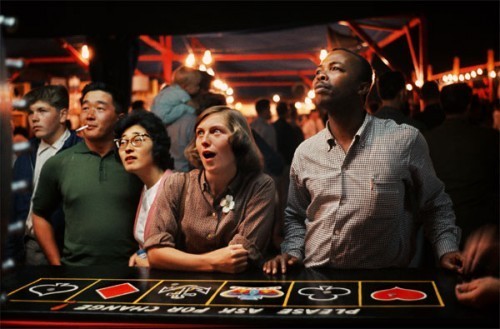
Over the last two weeks I introduced you to Saul Leiter and Ernst Haas, two of the great colour pioneers, and this week I want you to meet another – Fred Herzog (1930 – present). You can see his stuff quickly here in a Google Image search, but there’s no substitute for having it on paper and his book - Fred Herzong: Photographs (Amazon link) – is one of my favourite photography books.
Herzog is a home town hero for me. He was a medical photographer in Vancouver for most of his career, but wandered the neighbourhoods with his camera photographing the colour and the working class, mostly with Kodachrome, when he wasn’t working. It’s unfair to compare them, but you’ll see similarities between Haas, Leiter, and Herzog in their use of colour and subject.
“Take street pictures because it hones your instincts for speed and for quick composition. But above all what you bring in your mind to the scene is what makes your picture. If you don’t read, if you don’t have discussions with enlightened friends, you do not get there. There is a saying about seeing: Only a few people can see but most people don’t even look. And that says a lot to me. You can only see if you have something in your mind to bring to the picture. The camera is just the least important adjunct to your ideas. Your observations are important because they’re you. The camera is just a gadget you can carry on in your hand or around your neck or on a tripod.”



